MELVINS: THE MILLENNIUM TRILOGY
ALBUM REVIEWS: The Maggot, The Bootlicker and The Crybaby were all released in the space of a year, spanning the millennium. Three LPs that showcase the very different sides of Melvins.
THREE OF A KIND
Aside from the odd outlier, it often occurs to me that Melvins’ discography can be grouped chronologically in groups of three of four like-minded albums.
Whether that’s Gluey Porch Treatments, Ozma and Bullhead; Lysol, Houdini, Stoner Witch and Stag, or A Senile Animal, Nude With Boots and The Bride Screamed Murder – it works (mostly) across their entire catalogue – sometimes purposefully, as with the KISS EPs, sometimes, presumably coincidentally – whether it’s my imagination or Buzz and Dale’s sense of set-collecting, it seems to be broadly true.
All the way up to the last three LPs: Working With God, Bad Moon Rising and Tarantula Heart – they feel like they could belong together easily, even if a little bit of shoe-horning is required.
Never more so than with the ACTUAL trilogy of The Maggot, The Bootlicker and The Crybaby – released in close succession by Ipecac within the twelve months spanning the millennium.
That Melvins chose to bring in the new century with a huge project, catering to their prolific work ethic is entirely predictable in the best possible way.
All three LPs share similar artwork and were released together as a vinyl box set – The Trilogy – on the day that the final piece – The Crybaby – had its CD only release.
The first two LPs were reissued individually on vinyl in 2019, but we still await a lone version of Crybaby. Which seems at odds with The Trilogy’s original presentation as three LPs to make a whole.
The three albums are broken into thematic chapters; The Maggot is very much a “typical” Melvins LP – if such a thing exists, which it doesn’t, but you know what I mean – there’s a balance made between the most incredible riffs you’ve ever heard, the weight of the world, and odd tangential noise experiments and ambient playthings. It’s listed as the ‘Metal’ LP.
Part Two, The Bootlicker, is described as a “Pop” album, but it’s about as far from pop as you’re ever likely to get. That said, most of the songs are more conventionally structured, quieter, more melodic and their presentation is more immediate than their other work – but it’s still pretty fucking experimental to my ears, though.
The Crybaby’s theme is collaborations and covers. As well as team-ups with Pain Teens, Patton, Yow, Erik Sanko, Hank III and J G Thirlwell, the track-list includes covers of songs originally by Nirvana, The Jesus Lizard, Merle Haggard and Hank Williams.
You’d be forgiven for thinking that sounds like a hotchpotch, but the band pulls it off – The Crybaby sounds consistent and engaging throughout. Presumably the permissions and licensing obstacles that must accompany all those different contributors is what keeps it from being reissued on vinyl.
It’s a shame, though.
A core lynchpin to The Trilogy is Kevin Rutmanis.
His bass playing and inventive sense of melody is masterful, and means there’s an unsettling oddity to even the least experimental tracks on the three LPs.
As a debut goes, The Trilogy is pretty incredible; these were the first recordings Kevin had played on with the band. Mark Deutrom had left after Honky in 1997, and as the Cows split after the Buzz-produced Sorry In Pig Minor in 1998, it must have been a fairly obvious meeting of like-minded artistry that got him recruited into Melvins for the 1999 release of The Trilogy.
Although he would leave under a shadow a few years later, following the second Jello Biafra collaboration LP, Sieg Howdy!, his time with the band, to me, is the most interesting in terms of not knowing what to expect from them. The incredibly prolific time in which Kevin played for Melvins launched The Trilogy, Electroretard, Colossus of Destiny, Hostile Ambient Takeover and the team-ups with Biafra and Lustmord.
As a fan, it felt like he really opened up the experimental potential for the band that had only been hinted at with Honky – and annihilated with Prick - Kevin somehow brought the noise an accessibility that married perfectly with the ‘anything-goes’ attitude of the band’s writing.
His departure resulted in Buzz and Dale being deeply scarred – enough for them to decide that THEY were Melvins and, going forward, a revolving cast of supporting musicians would supplement their sound on bass and other instruments, without becoming full-time members.
That decision heralded the most commercial writing of their career with Big Business’ Coady Willis as an extra drummer and Jared Warren on bass, who would make way eventually for Trevor Dunn, Jeff Pinkus, Paul Leary, Steven McDonald and even original drummer Mark Dillard’s return for Tres Cabrones and Working With God.
Melvins even turned the absence of a permanent bassist into an asset and theme for an entire LP in 2016, with Basses Loaded which included all the above as well as Krist Novoselic, all guesting across the 12 tracks of the LP.
But we are here to take a dive into The Trilogy, so let us begin…
THE MAGGOT
IPECAC RECORDS, 1999.
All three LPs of The Trilogy are fine examples of Melvins at their experimental best, but it’s The Maggot that I return to most often, for the fix I crave when it is only Melvins that will elevate me.
It is more thunderous than Gene Simmons’ self-proclaimed divinity.
The vinyl flows much better than the CD or streaming, because the individual tracks come together as a single piece, without any digital demarcation that is otherwise distracting. The sequencing on the CD split all the tracks in two - four, in the case of Amazon - which dominates side one - and those tiny breaks pull you away from the songs unnecessarily.
It continues to astonish me how much richer, sludgier and louder the vinyl is compared to the other formats. The Maggot sounds fucking huge on a record, on a proper hi-fi. Typical streaming platforms – or even a CD – don’t do the depth of the racket justice.
The record flows really well – it benefits entirely from being eight tracks instead of the split 16 elsewhere. It’s suddenly coherent.
Side One kicks off with the full on punked-out high-speed chase of (lower case) amazon. Under two minutes of in-your-face spit and bile. Almost worth a chef’s kiss on its own, but we’re suddenly snapped into shape when (upper case) AMAZON follows it up.
This is what we came for. Elephantine, glacially-paced Melvins in excelsis.
What a riff.
Its circular, echoing structure goes on for days (well, five minutes), and it grows and grows and grows, with more feedback, whining and noise being incorporated into its huge wall of sound before its rapid dissipation that glides seamlessly into the forthright We All Love Judy.
It's a short, fast, punching song, but its metal lead riff is of the heritage that makes you move your head around in all directions, following its darting redirections and chugs with sheer, unadulterated joy.
I don’t mean head banging. I’m far too old and far too aware of the potential health and safety hazards such rowdy behaviour represents.
I mean a more a casual nod, which doesn’t just inattentively follow the beat, but is drawn, like footprints in the snow, in circles, lines and spirals… it’s a great, GREAT riff.
The next track, Manky, ambiently hums and drones for two minutes before smacking down with another awesome example of classic Melvins’ tectonic, lumbering might.
There’s a fucking killer, noise-infested solo from Buzz that rails against the riff and elevates the track to sheer magnificence, before dropping back out to the hum that heralded it and suddenly, Side One is drawn to a close.
The Green Manalishi is a cover of a 1970 Fleetwood Mac single, which in turn was covered in 1979 by Judas Priest, on Hell Bent For Leather.
Melvins’ version has more in common with The Priest than The Mac.
It’s a super-dynamic seven minute epic – exemplifying the quiet/chorus structures that made the early 90s so anthemic – but this time, without a big singalong chorus – instead, the guitar does all the lifting.
The next two tracks whistle past your head like a Jurassic bluebottle. Both are only two minutes in duration, but there’s more than double that in terms of their content, squeezed into that high-speed brevity.
It’s really rewarding to hear how much texture, change and invention can be shoe-horned into such a tight space. There’s a lot going on - both in the full-on thrash of The Horn Bearer and the analogue disco of Judy – which is deliberately bare-bones, and it somehow manages to feel busy and packed with activity because of that sparseness. It’s just Dale’s bass drum and cymbals backing an almost-single-note drone from Kevin and Buzz, but it’s addictive and way too short!
The Maggot finishes in splendour with the ten-minute ode to starry-eyed infatuation, See How Pretty, See How Smart.
Or, at least, the title suggests that’s what it’s about. The stream-of-concience-bordering-on-nonsense lyrics suggest it’s got fuck all to do with much at all.
The song is an accumulation of all the gifts the band have bestowed upon us thus far; drones, chugs, thunder, lightning, noise, chaos and, bizarrely, sleigh bells.
What better way to end an LP of this magnitude with a full minute of sleigh bells?
THE BOOTLICKER
IPECAC RECORDS, 1999.
Amusingly, The Bootlicker is billed as a showcase for Melvins’ “pop” flirtations.
Fair enough – it’s definitely not focused on weight and groove like The Maggot, and it’s not got the multitude of different things going on that The Crybaby has, but it’s not pop.
What is pop, anyway? And, more importantly, how do Melvins define it?
What The Bootlicker has got, in droves, is accessible Melvins.
There’s still some noisy WTF? moments, of course – it’s Melvins - but generally, the songs come from the more straightforward end of their spectrum, and the WTF?s are more about the style of the songs than than the noise they make, for a change…
Early standout is the second track, Let It All Be, which was the instigation for writing this piece when I saw a contemporary clip of them playing the song magnificently on YouTube.
It’s a meandering, rolling groove, held down by Kevin’s bass, while the spacious drumming of Dale taps out an all-too-easily-misconstrued-as-simplistic backbeat.
It’s an oddly proggy ten minute, subdued high-point. The kind of track you put on when you get into bed, but you’re lulled to sleep by its hypnosis way before it reaches its climax.
Ahem.
Black Santa’s got the air of The Mothers of Invention about it, while WeWe is a bleeping experimental electronic minute long waste of space.
The next true gem comes in the form of the T-Rex-isms of Up The Dumper, a contender for my track of the LP. Buzz sounds like Bolan; über melodic vocals, over gently picked, almost doo-wop style guitars.
Odd in the very best way.
Mary Lady Bobby Kins is a rolling, blissed out melody - and perhaps defines most clearly what Melvins’ idea of pop is - clean vocals and instrumentation, meandering at first - but with a clarity that can’t come through when the usual weight of the band is holding it down. We finally lift off into soft-strummed 60s or early 70s-inspired clean-tone tunefulness. It’s really light. It’s not what you expect.
Jew Boy Flower Head, despite its immaculate title, is a largely forgettable, awkward blues song which is thankfully kept short, much like the only marginally more interesting and slightly jazzier Lone Rose Holding Now.
The album finishes on Prig. Nearly nine minutes - the first four of which are given over to truly dreadful electronic beeps and boops and a digital soundscape of a roaring tide, before we are confronted with its tail end - a lush Big Star-esque acoustic ballad, which ends The Bootlicker on a melodic high that could never have been predicted by their earlier work.
Prig hits home how deeply unafraid of experimenting the band are, and goes to show that sonic research doesn’t need to be discordant and difficult to be worthwhile and really exciting.
THE CRYBABY
IPECAC RECORDS, 2000.
Of all three LPs, it took me the longest to warm to The Crybaby.
For two reasons; the jumbled nature of it - covers and contributors - immediately made me judge it unfairly as the hotchpotch mentioned at the start of this article, especially as Patton is involved, which is rarely a positive thing for my own taste.
And then there’s the totally straight opening cover of Teen Spirit, which feels so much less than it could have been, despite that probably being the entire point.
Melvins covers are always interesting - whether they are interpretations or tributes - there’s normally a unique Melvins aspect to them that engages the listener in adulation, slack-jawed amazement, amusement or horror.
You get none of that with Teen Spirit. It’s just Teen Spirit. With Leif Garrett’s vocals.
Oh, how I’d have loved to hear it as though it was recorded for Bullhead.
Yow’s inclusion as a compadre works well, and their version of The Jesus Lizard’s Blockbuster is exciting because it’s barely recognisable, and you navigate the familiar in a new way because of it.
They treat Hank Williams’ Rambling Man straight, like Teen Spirit - but because the early Country styling is so unlike their own work - and the song itself is far less over-saturated, culturally - it works really well.
Hank III’s yodeling vocals deserve their own award for emulation of Gramps’ original material.
Other highlights include the team-up with Foetus, Mine Is No Disgrace. Its howling, surging chorus on top of the lumbering riffage of the verses makes the song a compelling and memorable centrepoint of the LP.
David Yow makes a return for Dry Drunk, which contains some of Buzzo’s best guitar work of the album. Its central riff is magnetic, awkward, driving - and repeats into oblivion - well - into a delightfully ill-fitting digital interlude by Godzik Pink - before coming out the other side at velocity, with Yow squalling over the full-on monstrous punk rock that the band is thundering behind him.
And then, too soon afterwards, another interlude.
This time odd, child-like, jazz-inflected meanderings, before another full-on triumphant return for the last few seconds of the song.
It’s a highlight, certainly of Side Two, and probably the LP as a whole.
Okie From Muskogee is another straight cover with Hank III on vocals. It’s a Merle Haggerd song that’s nostalgic for me, so, despite loving the idea of a “proper” Melvins interpretation, its true-to-the-orginal styling is a welcome two minute long diversion.
Bliss Blood of Pain Teens joins the band on The Man With The Laughing Hand Is Dead, an eleven and a half minute, drawn out, progressive epic which, while interesting enough, feels twice as long as it needs to be.
At least; it does today.
The Crybaby draws to a close with Moon Pie - listed as a nearly thirteen minute song, but actually consisting of seven minutes of sampled thunderous noise before going into another six minutes of silence.
The album would have felt stronger without it.
Nevertheless, The Crybaby makes the fears of a hotchpotch redundant - and even though it is deliberately all over the place - from old school country to self-indulgent noise-scapes - there’s a clear joy in proceedings that you can’t help but buy into.
It’s such a shame it’s not available as its own vinyl edition. In a bizarre way, it would form a great gateway for new listeners to the “anything-goes” aspects of Melvins’ writing.
A SUM OF PARTS
The Trilogy shows off the entire gamut of Melvins - or, at least, where they were at the turn of the century - and it’s a rewarding journey that culminates in, if not their strongest suite of LPs, three of their most varied.
The following years would see the band deliver a ton of singles on AmRep - the start of their unstoppable run of new and exclusive variants for the label that still goes on today.
Via Ipecac, their releases never stopped being interesting - ambient noise experiments, electronic soundscapes, acoustic albums, covers albums and, of course a multitude of classic riff-rammed ‘traditional’ Melvins LPs.
The Trilogy forms a break point in Melvins career. It forms their 10th-12th LPs, and feels to me like it sets up expectation for a new, unpredictable series of sounds that has sustained the band and its many hardcore fans for another quarter century, and counting.
The Maggot is indispensible. The Bootlicker is desirable. The Crybaby is probably just for the hardcore, but those listeners will adore it beyond measure.
I saw the band at the time of The Trilogy. I’d seen them several times before then, too. A couple of months ago I saw Buzzo on an acoustic tour. Every single time, I’m blown away. Regardless of the shape the band takes and the songs that fill their set, they are always awe-inspiring.
Having the balls to drop The Trilogy on an unsuspecting public would be commercial suicide, or, at the very least, a surprise that couldn’t be repeated for any other band.
For Melvins, it was neither, and that’s what makes them so fucking cool.
Ave, Ultra!
Ipecac Records - Melvins Record Label


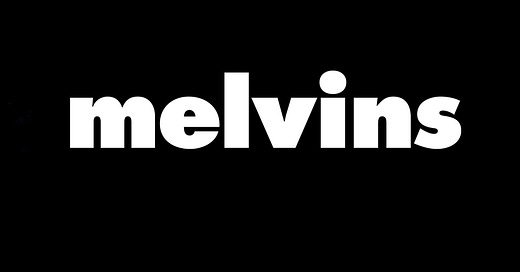



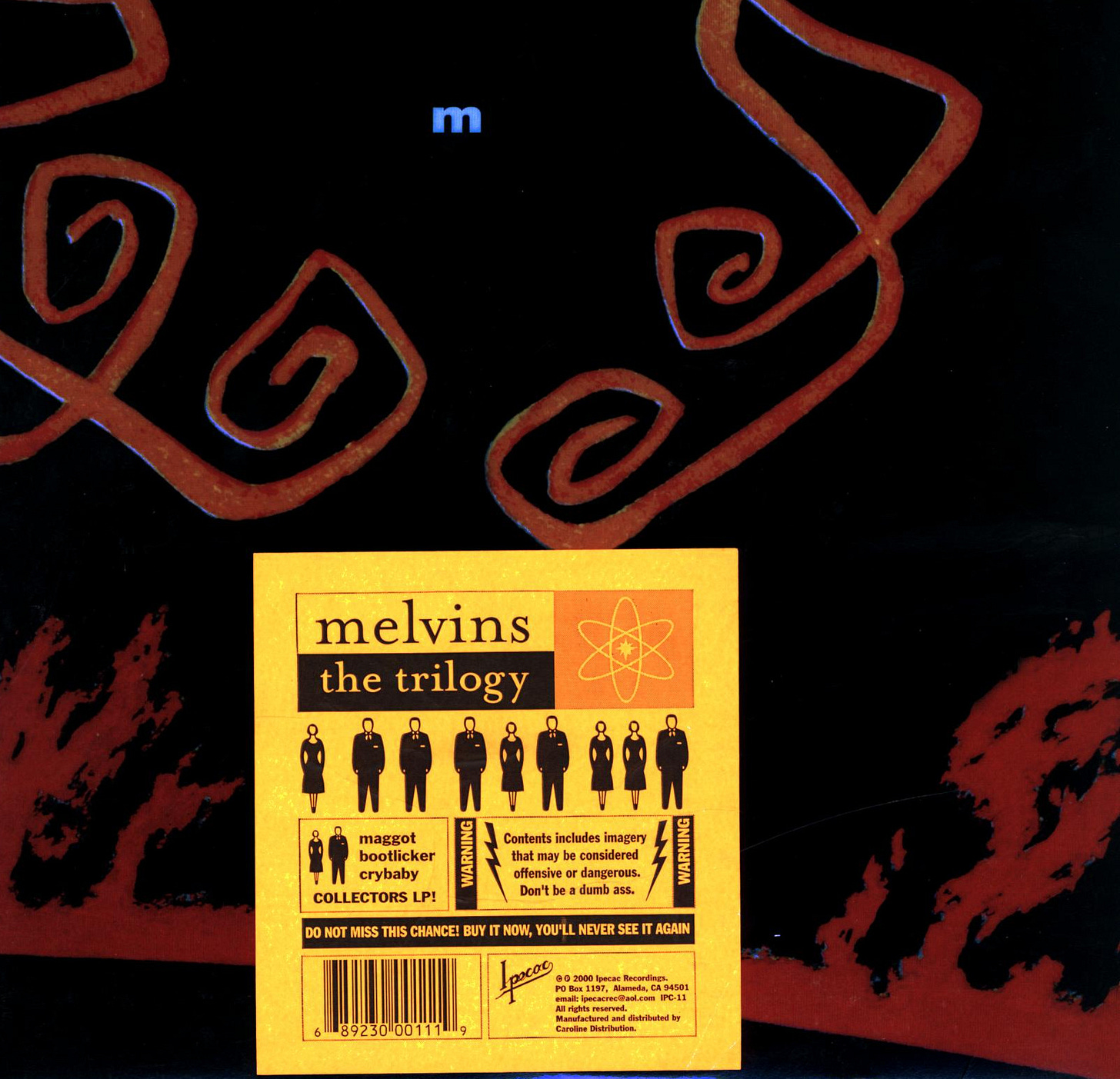
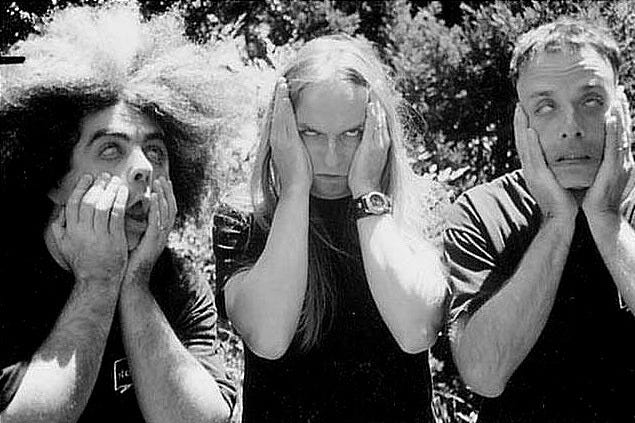

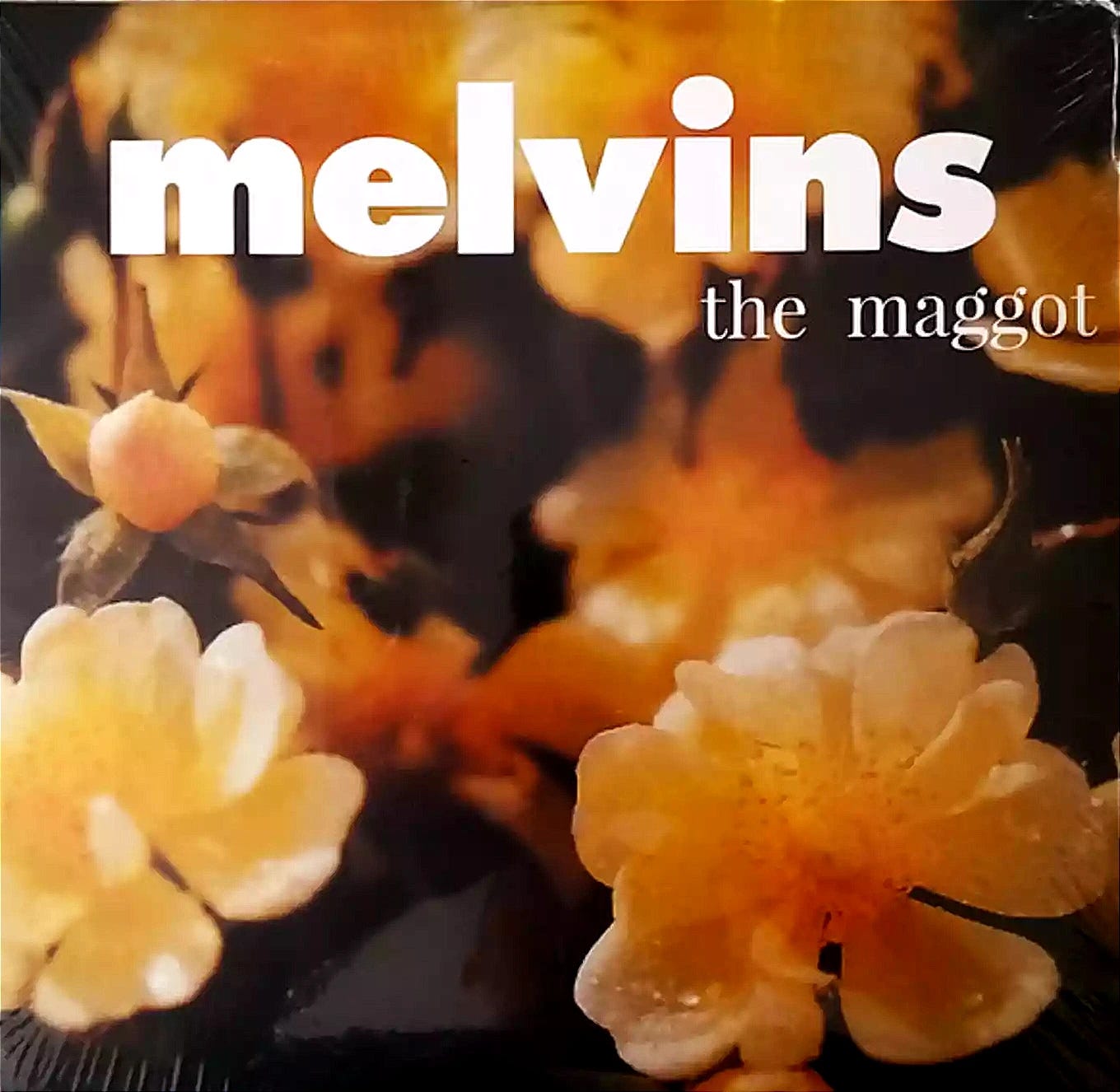
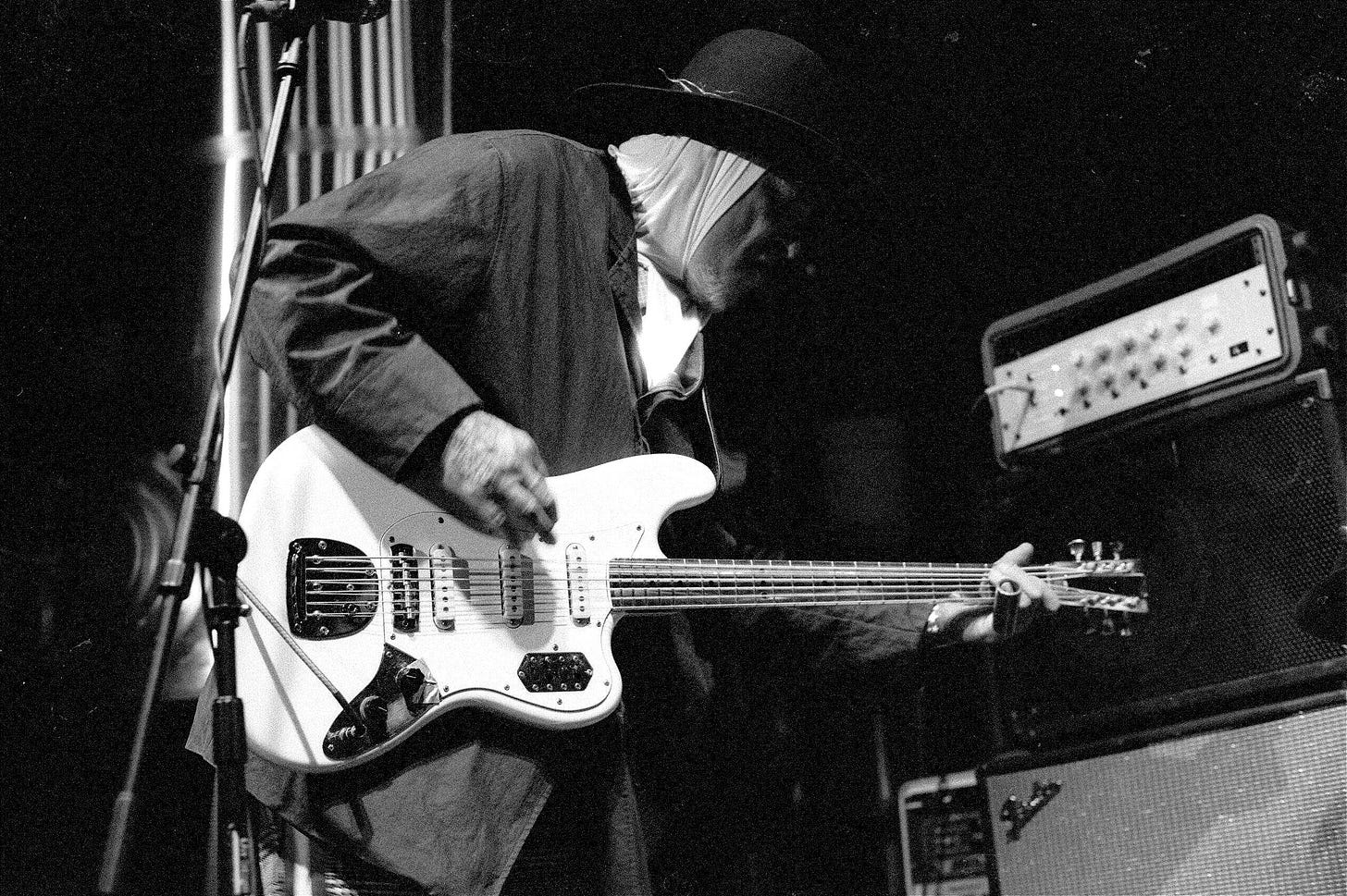
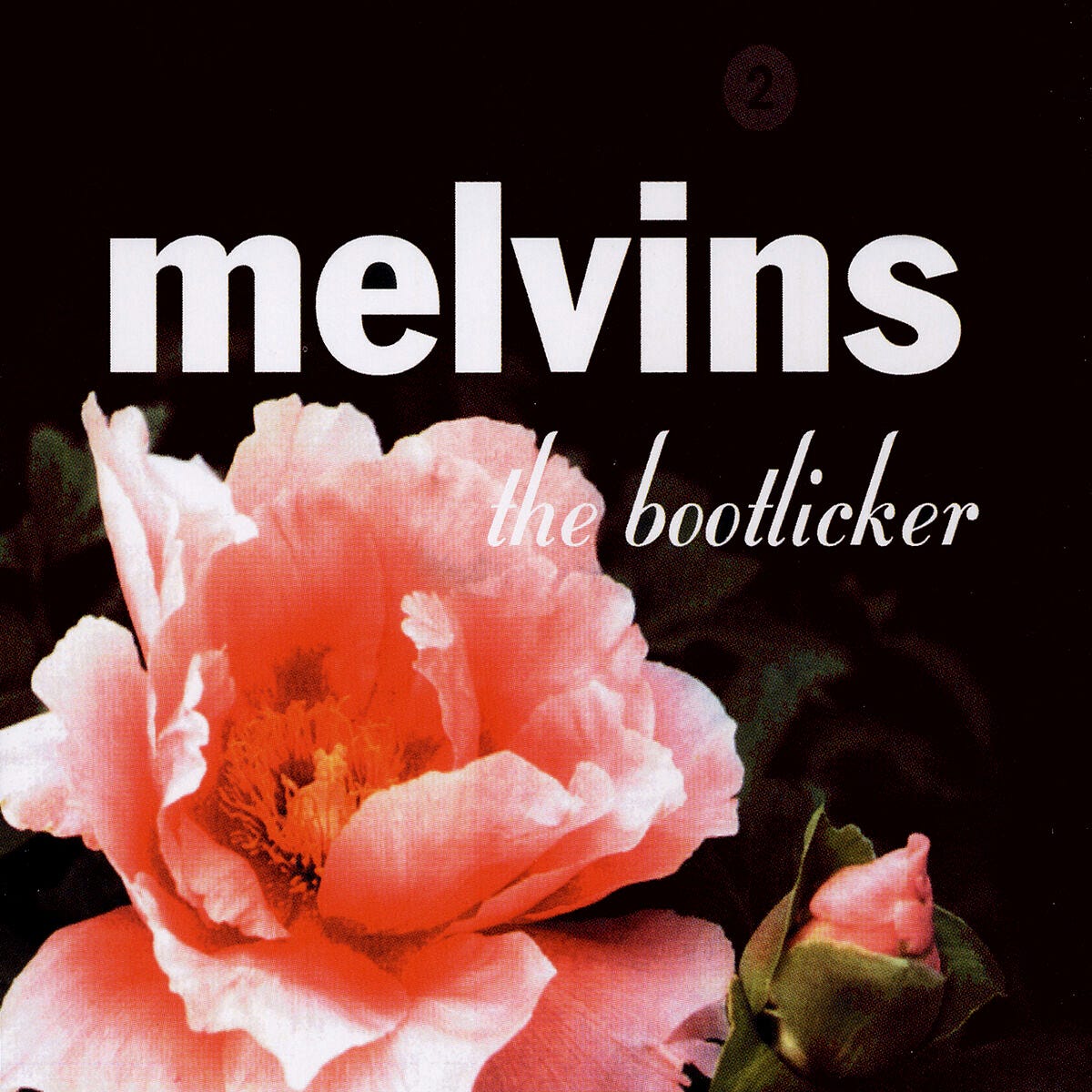
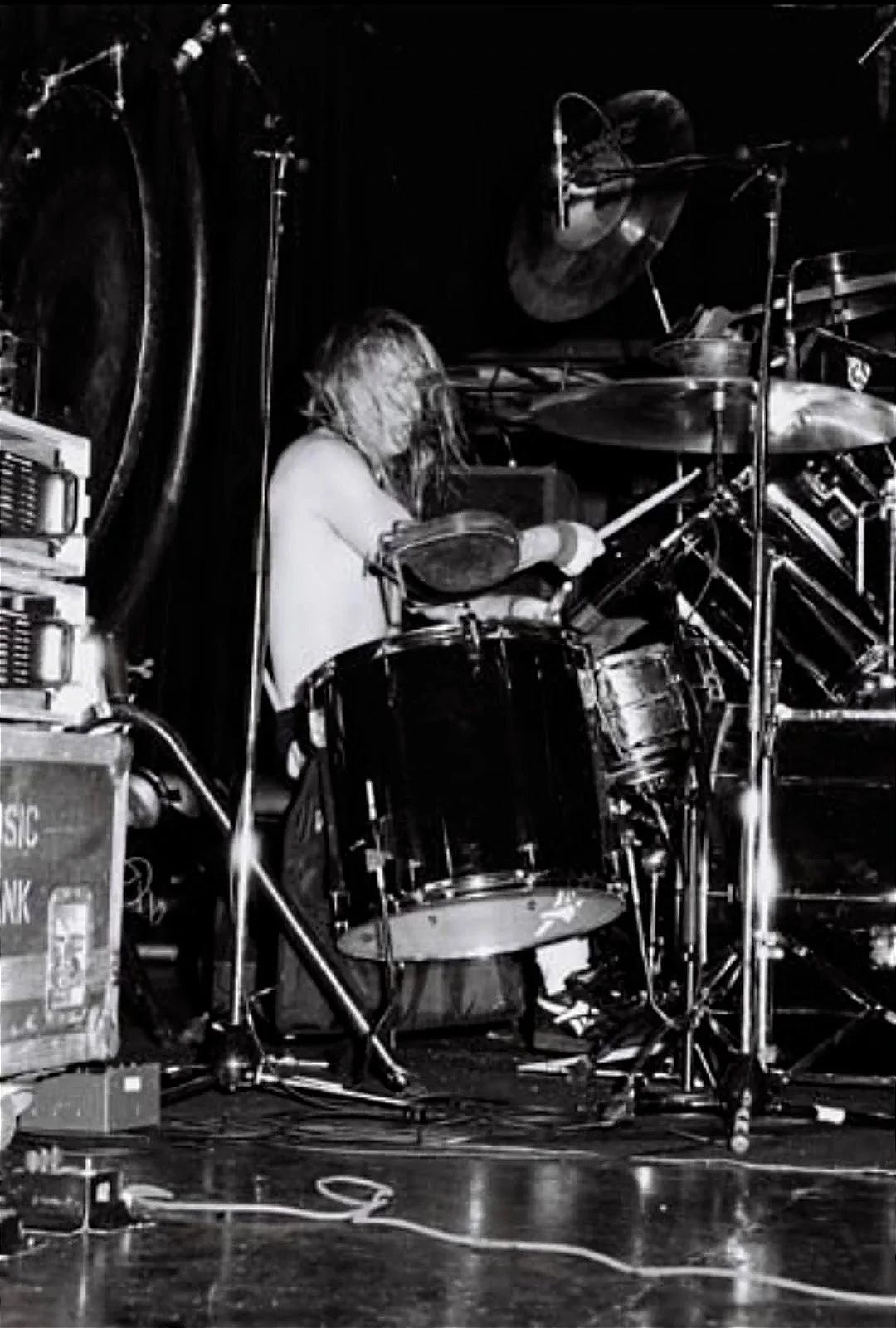

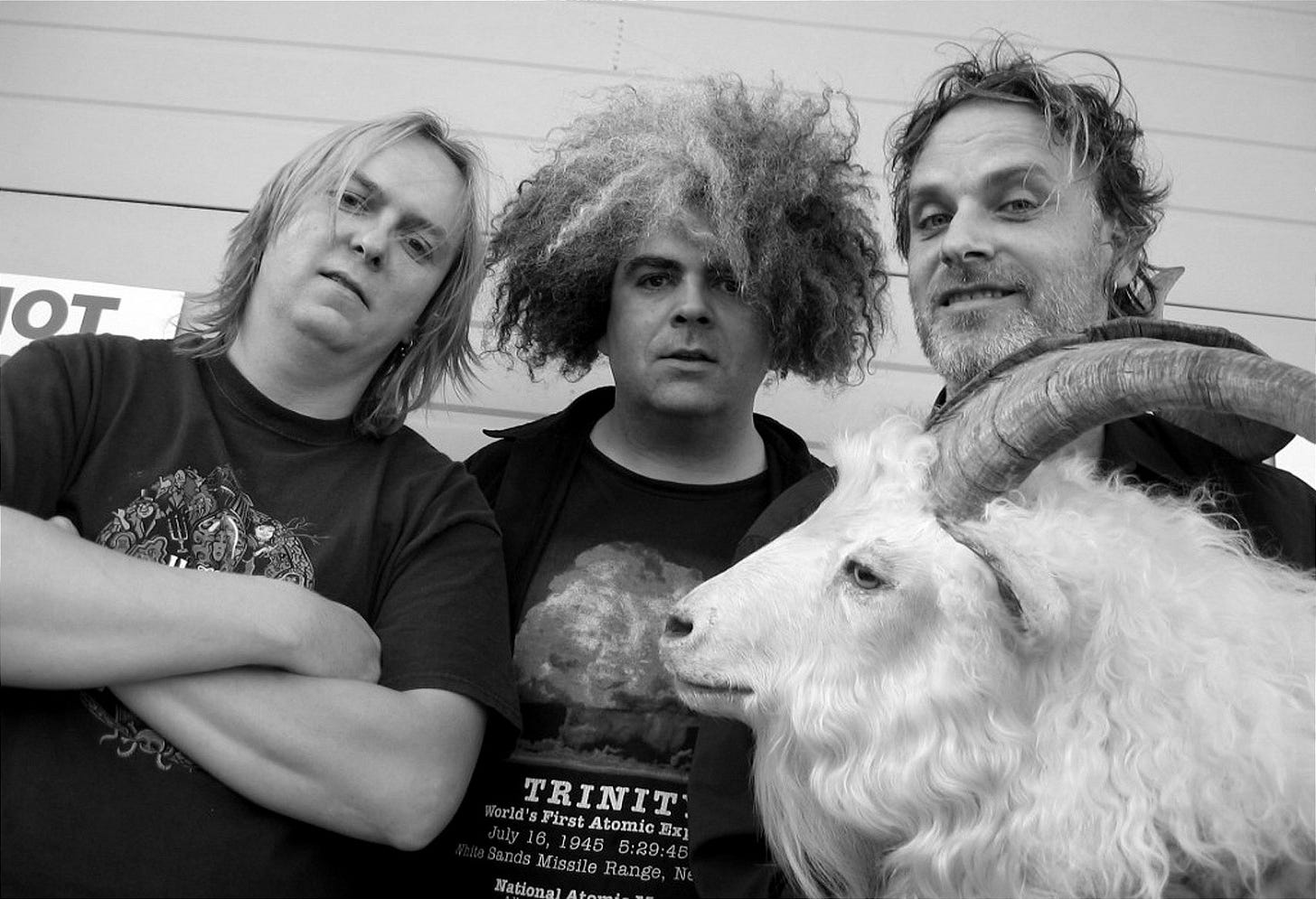
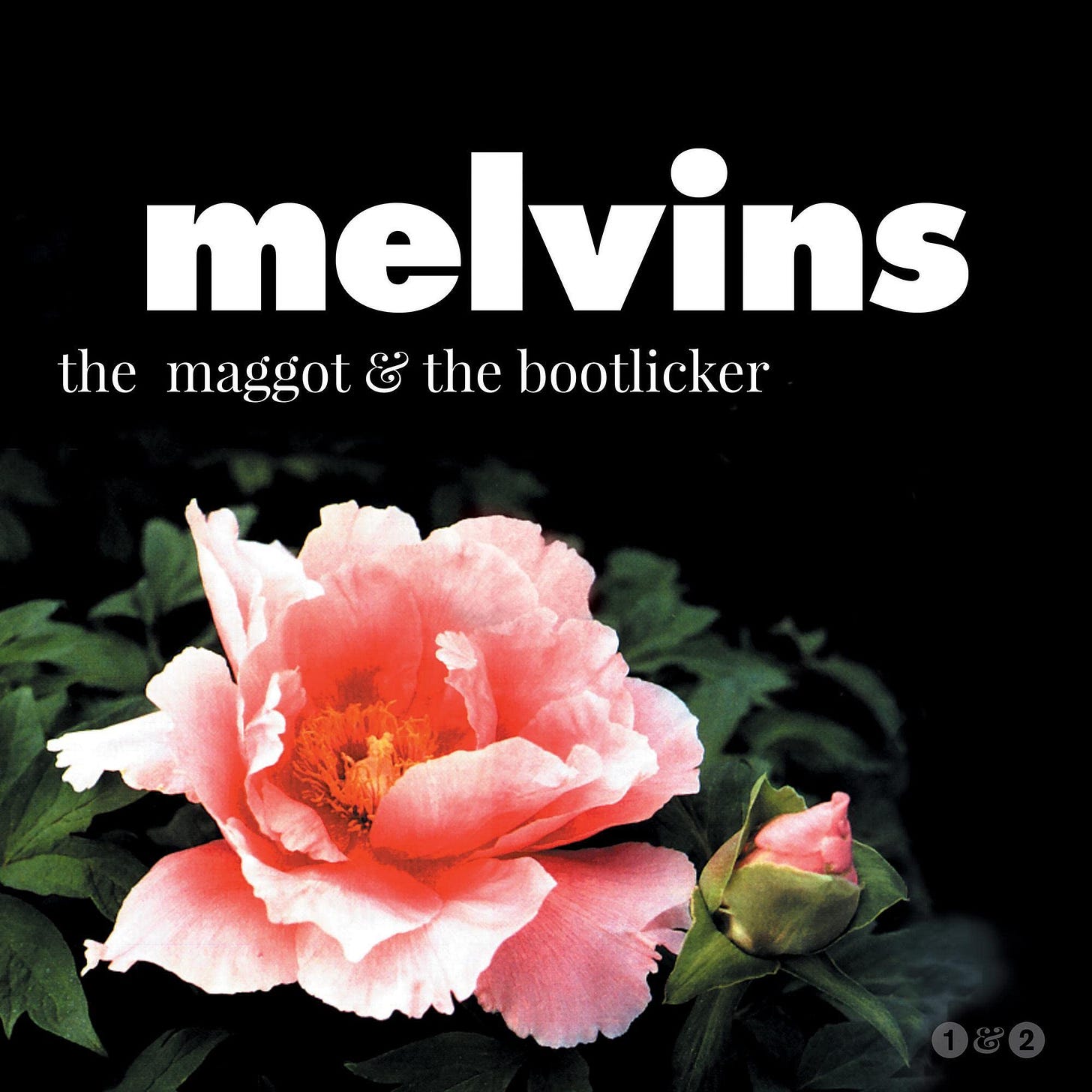
You are right on the money with this. The Maggot is a real high point in their long and illustrious career. And yes, Kevin is key. The Melvins are always HUGELY influenced by whoever is on bass duties. It's part of what keeps them constantly new. You may not always like the lineup changes at first but it's always better than stagnation.
Loving the Melvins is like being in a secret club. If you know, you know.
And props to Mike Patton for enabling this mighty force to do whatever the fuck they want.
Great piece; love Melvins! Saw them in 2023 with Mr. Bungle: one of the most chaotic and amazing shows of my life. Catching them live with Napalm Death in a few months too. Again, awesome writing!